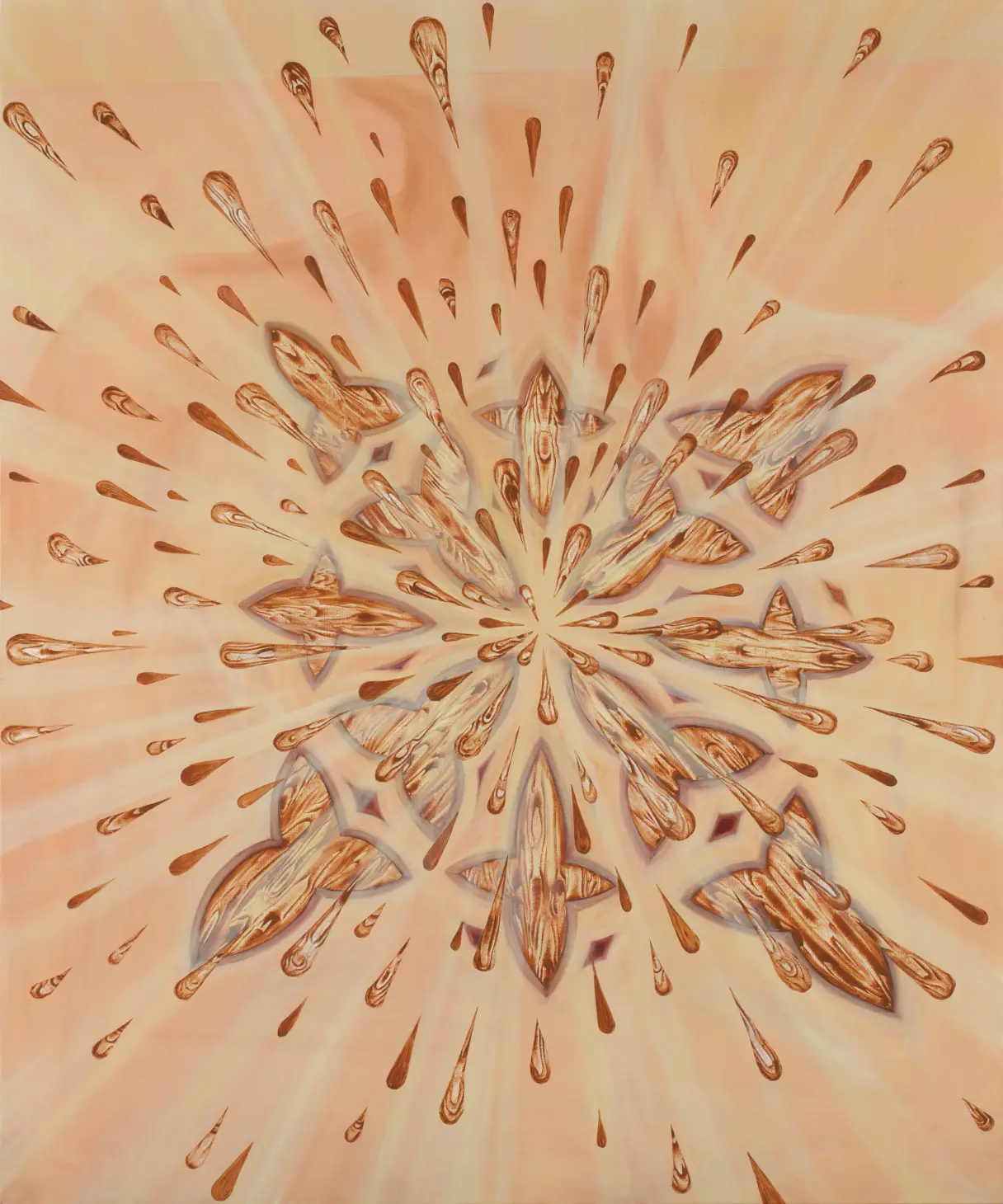Everything around dissolves. The heat intensifies. Walls soften, melting into a gelatinous mass. Forms ripple like the surface of water, gleaming objects contort. Space shifts, reshaping itself. Before the rhythm of liquefaction engulfs you entirely, allow the boundaries between your body, consciousness, and exterior to blur.
A fluctuating mass—never static. It expands, disintegrates, absorbs the foreign, assimilating disparate orders. A flow that fractures the very notion of naturalness. Supermass resists division: mutating, perpetually eluding definition, ceaselessly reorganising itself and its surroundings. It remains unfixed—fluid, elusive, its status always negotiable, both biologically and symbolically.
The exhibition delves into post-natural hybridisation, where objects shed their alienness. No longer mere mechanical extensions, they fuse with the body as integral entities. Here, it is not a response to absence but an expansion of potential—a means of absorbing and remodelling the world. Not an appendage, but part of a greater organic system. Morphing, it extends.
Liquid wood, solidifying fluids, imitations of biological structures—these naturecultural materials challenge the properties of matter, inviting a redefinition. Supermass revolves around the cyclicality of merging, fusing, and seeping, questioning the very limits of its own agency. Can matter exist beyond form? Is substance merely the result of technical manipulation, or does it follow its own intrinsic logic?
Feiglewicz paints with liquid wood, exploring the simulacrum—a matter that imitates, liquefies, and transforms itself. In her paintings, substance remains fluid, open to emergence, suspended between reality and fiction. She questions substance not as a reflection of the world, but as its very construction. Simulated wood, a prosthetic absorbed into the body, a surface that unfolds into a multi-layered object. In Feiglewicz's paintings, matter transcends its physicality, entering an alchemical state where the body dissolves into its surroundings. Wood is no longer solid; it sheds its rigidity in an attempt to breach the boundary between subject and substance, between the living and the transformed.
Wodzisławski’s installation stages a confrontation between two orders—the imagined and the material—a metaphor of the dualism of prosthetic barriers. The silvery light reflected from within the husk of a dead albino peacock fractures contact with reality, enclosing perception in a utopian mirage. A tapestry woven from post-accident airbags forms a protective barrier that saves the body in moments of collision. Yet, it is also an unrelenting memento of a crash with the real.
The prosthetic metamorphosis of matter unfolds in Wodzisławski’s bionic objects. The platform of a Balenciaga shoe, designed for cushioning and optimizing movement, is transfigured—its foundation replaced with bone. The shoe mutates into a prosthesis, an organic extension of the body that does not merely mimic its mechanics but subsumes its very structure. Similarly, the architecture of the bone house entwines the skeletal remains of a domestic pigeon with the cityscape. In this realm of horror design, bone becomes the building material, and ex-life is rendered as mere structure.
Liquid as code. Drops of milk, rain, and wood drift through Feiglewicz’s works, weaving into a single current. The form of the droplet—echoing both the breast and the eye—resonates with the fluid transition between substances, marking the moment when the body dissolves into the landscape, and the landscape, in turn, absorbs corporeality.
In Wodzisławski’s work, this state of suspension takes on another form. The chrysalis melts into its cocoon, yet the butterfly, though fully shaped, remains trapped in an in-between existence. The cocoon ceases to be mere shelter—it transforms into a new structure, an organism that never releases itself into completion. Just as the droplet exists at the threshold of substance, so too do the butterfly’s wings remain fused with the matter that was meant to be only an incubator.
The eye falters. Feiglewicz, burdened by a genetic defect in her vision, faces its steady deterioration after giving birth. The fear of blindness becomes an engulfing presence. Supermass—a crushing weight of perception—saturates the experience of the world, manifesting as both heightened sensitivity to the body and its surroundings and the nightmarish spectre of sensory loss.
Wodzisławski explores the degeneration of sight—retinal damage, optical illusions—a gaze that is both all-seeing and blind. The sperm-drenched eye pushes the limits of aesthetic extremity, testing visuality, shaping a narrative of vision and identity, fertilization and stasis. Opacity reveals the very limits of contact.
The wooden heart throbs, exuding a resin-like essence. No longer static, the wood transforms—it breathes, it cracks, and its substance seeps from within. The heart becomes a source of dispersion, a nucleus from which a new quality of matter spills forth. In Wodzisławski’s red Preparation, a larva parasitizes the oak seed, compelling its host to release hormones that trigger uncontrolled tissue growth. Both processes suspend matter in tension between life and lifeless form.
Biological materials, present in the exhibition both as raw substances and as mold-shaping forces, emerge as an alternative technology—suspended between imitation and symbiosis. Wood, resin, and dead tissue do not serve as passive media; they assert themselves as active matter, reconfiguring their own purpose. These acts of fusion arise from an attentiveness to plant phenomena—their slow, deliberate expansion and persistent adaptation.
Supermass unfolds as a space of excess, where matter liquefies into flesh, and the organic, the synthetic, and the broken combine into a new reality. It seeps, settles, crystallizes into unknowable forms. Categories dissolve when matter refuses to comply. Supermass is a state of uncertainty—swelling, bending, growing beyond recognition, then vanishing. It is mass in motion, shape unfixed. A diffuse sensation.
Text: Kamil Mizgala
Translated by: Maria Wańkowicz-Siwecka
